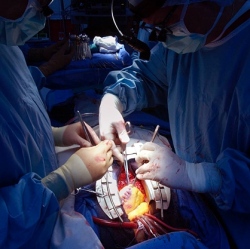
By seeding cells on cadaveric hearts stripped down to their underlying structure, a team of researchers led by Andrew Wan and Karthikeyan Narayanan at the A*STAR Institute of Bioengineering and Nanotechnology (IBN) have produced two different types of heart tissues, both of which will be needed to make a fully beating organ.
The researchers set out with a simple question: could the scaffold left behind in so-called ‘decellularized’ hearts guide pluripotent cells to form new heart tissues without the need for external cues? To find the answer, the researchers used the hearts of mice and removed all heart cells with a detergent solution, leaving just the extracellular matrix, a fibrous tangle made primarily of collagen protein and growth factors.
By seeding cells on cadaveric hearts stripped down to their underlying structure, a team of researchers led by Andrew Wan and Karthikeyan Narayanan at the A*STAR Institute of Bioengineering and Nanotechnology (IBN) have produced two different types of heart tissues, both of which will be needed to make a fully beating organ.
The researchers set out with a simple question: could the scaffold left behind in so-called ‘decellularized’ hearts guide pluripotent cells to form new heart tissues without the need for external cues? To find the answer, the researchers used the hearts of mice and removed all heart cells with a detergent solution, leaving just the extracellular matrix, a fibrous tangle made primarily of collagen protein and growth factors.
